X-chromosome target specificity diverged between dosage compensation mechanisms of two closely related Caenorhabditis species
- PMID: 36951246
- PMCID: PMC10076027
- DOI: 10.7554/eLife.85413
X-chromosome target specificity diverged between dosage compensation mechanisms of two closely related Caenorhabditis species
Abstract
An evolutionary perspective enhances our understanding of biological mechanisms. Comparison of sex determination and X-chromosome dosage compensation mechanisms between the closely related nematode species Caenorhabditis briggsae (Cbr) and Caenorhabditis elegans (Cel) revealed that the genetic regulatory hierarchy controlling both processes is conserved, but the X-chromosome target specificity and mode of binding for the specialized condensin dosage compensation complex (DCC) controlling X expression have diverged. We identified two motifs within Cbr DCC recruitment sites that are highly enriched on X: 13 bp MEX and 30 bp MEX II. Mutating either MEX or MEX II in an endogenous recruitment site with multiple copies of one or both motifs reduced binding, but only removing all motifs eliminated binding in vivo. Hence, DCC binding to Cbr recruitment sites appears additive. In contrast, DCC binding to Cel recruitment sites is synergistic: mutating even one motif in vivo eliminated binding. Although all X-chromosome motifs share the sequence CAGGG, they have otherwise diverged so that a motif from one species cannot function in the other. Functional divergence was demonstrated in vivo and in vitro. A single nucleotide position in Cbr MEX can determine whether Cel DCC binds. This rapid divergence of DCC target specificity could have been an important factor in establishing reproductive isolation between nematode species and contrasts dramatically with the conservation of target specificity for X-chromosome dosage compensation across Drosophila species and for transcription factors controlling developmental processes such as body-plan specification from fruit flies to mice.
Keywords: C. briggsae; C. elegans; X-chromosome dosage compensation; chromosomes; condensin; dna-binding motifs; gene expression; molecular evolution; sex determination.
© 2023, Yang, Lo et al.
Conflict of interest statement
QY, TL, KB, ER, DL, BM No competing interests declared, CS Caitlin Schartner is affiliated with Roche Diagnostics. The author has no financial interests to declare
Figures
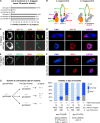
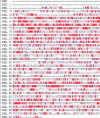
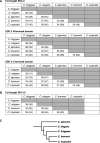

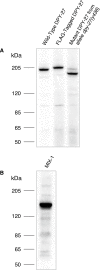
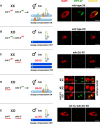
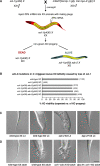


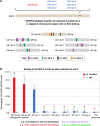
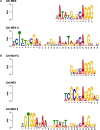
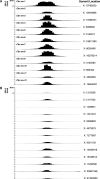
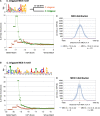
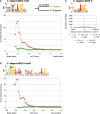

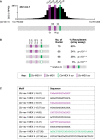
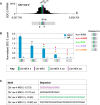
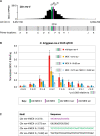

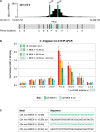
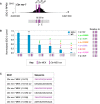

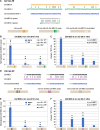
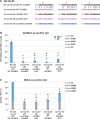
Update of
- doi: 10.1101/2022.12.05.519163
Similar articles
-
Combinatorial clustering of distinct DNA motifs directs synergistic binding of Caenorhabditis elegans dosage compensation complex to X chromosomes.Proc Natl Acad Sci U S A. 2022 Sep 13;119(37):e2211642119. doi: 10.1073/pnas.2211642119. Epub 2022 Sep 6. Proc Natl Acad Sci U S A. 2022. PMID: 36067293 Free PMC article.
-
A condensin-like dosage compensation complex acts at a distance to control expression throughout the genome.Genes Dev. 2009 Mar 1;23(5):602-18. doi: 10.1101/gad.1751109. Genes Dev. 2009. PMID: 19270160 Free PMC article.
-
Condensin-driven remodelling of X chromosome topology during dosage compensation.Nature. 2015 Jul 9;523(7559):240-4. doi: 10.1038/nature14450. Epub 2015 Jun 1. Nature. 2015. PMID: 26030525 Free PMC article.
-
X-Chromosome dosage compensation.WormBook. 2005 Jun 25:1-14. doi: 10.1895/wormbook.1.8.1. WormBook. 2005. PMID: 18050416 Free PMC article. Review.
-
Caenorhabditis elegans Dosage Compensation: Insights into Condensin-Mediated Gene Regulation.Trends Genet. 2018 Jan;34(1):41-53. doi: 10.1016/j.tig.2017.09.010. Epub 2017 Oct 13. Trends Genet. 2018. PMID: 29037439 Free PMC article. Review.
Cited by
-
The impact of differential transposition activities of autonomous and nonautonomous hAT transposable elements on genome architecture and gene expression in Caenorhabditis inopinata.Genetics. 2024 Jun 5;227(2):iyae052. doi: 10.1093/genetics/iyae052. Genetics. 2024. PMID: 38577765 Free PMC article.
-
Parallel evolution of X chromosome-specific SMC complexes in two nematode lineages.bioRxiv [Preprint]. 2025 Apr 30:2024.05.21.595224. doi: 10.1101/2024.05.21.595224. bioRxiv. 2025. PMID: 38826443 Free PMC article. Preprint.
References
-
- Alekseyenko AA, Peng S, Larschan E, Gorchakov AA, Lee OK, Kharchenko P, McGrath SD, Wang CI, Mardis ER, Park PJ, Kuroda MI. A sequence motif within chromatin entry sites directs MSL establishment on the Drosophila X chromosome. Cell. 2008;134:599–609. doi: 10.1016/j.cell.2008.06.033. - DOI - PMC - PubMed
-
- Alekseyenko AA, Ellison CE, Gorchakov AA, Zhou Q, Kaiser VB, Toda N, Walton Z, Peng S, Park PJ, Bachtrog D, Kuroda MI. Conservation and de novo acquisition of dosage compensation on newly evolved sex chromosomes in Drosophila. Genes & Development. 2013;27:853–858. doi: 10.1101/gad.215426.113. - DOI - PMC - PubMed
-
- Anderson EC, Frankino PA, Higuchi-Sanabria R, Yang Q, Bian Q, Podshivalova K, Shin A, Kenyon C, Dillin A, Meyer BJ. X chromosome domain architecture regulates Caenorhabditis elegans lifespan but not dosage compensation. Developmental Cell. 2019;51:192–207. doi: 10.1016/j.devcel.2019.08.004. - DOI - PMC - PubMed
-
- Bailey TL, Elkan C. Fitting a mixture model by expectation maximization to discover motifs in biopolymers. Proceedings. International Conference on Intelligent Systems for Molecular Biology; 1994. pp. 28–36. - PubMed
Publication types
MeSH terms
Substances
Associated data
- Actions
Grants and funding
LinkOut - more resources
Full Text Sources
Molecular Biology Databases
Miscellaneous

